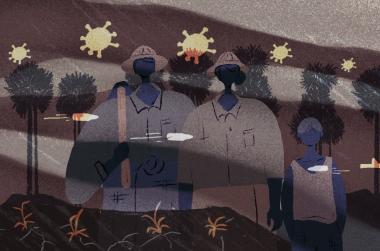The forest crowds right up to the side of Tin Maung’s simple wooden home in the remote hills of Magway, eager tendrils curling ever closer. The dusty track behind his shed leads swiftly into a place of shifting shadows, where the sun-baked yards, child-babble and chicken-squawk of village life is enveloped by the solemn clamour of the wild woods.
But while the tangled undergrowth may have an untamed appearance, it is actually a carefully cultivated plot. Many of the bushes here are adorned with clusters of blood red berries that represent a crucial cash crop for Tin Maung and his neighbours: coffee.
The 60-year-old has been planting coffee for two decades, but without the means to process it he has never tasted a brew of his own beans.
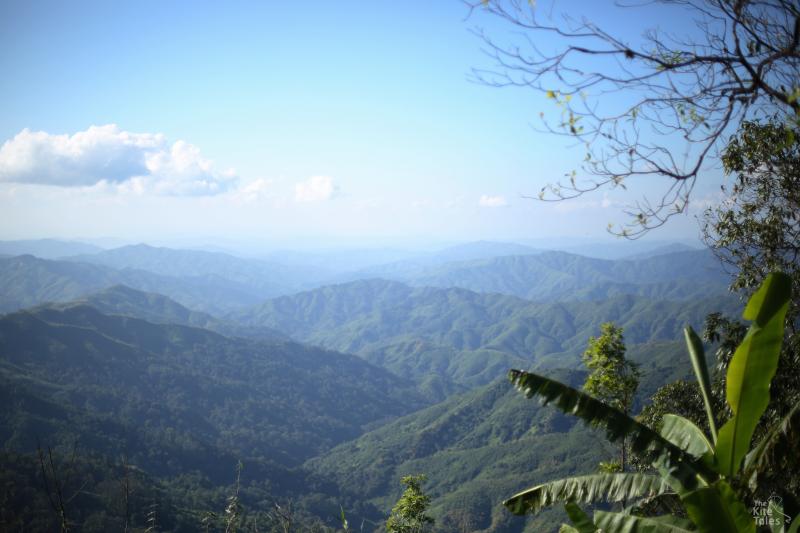
Farmers in Myanmar have been growing both Robusta and Arabica coffee for well over a century. Missionaries are thought to have grown the crop in southern areas in the late 1800s, and plantations later spread across eastern Myanmar. Coffee cultivation was encouraged both under British colonial rule and the junta government that ruled for decades after independence, but isolation under the military and poor processing techniques meant that the country was never recognised as a serious producer.
Tea has traditionally been Myanmar’s top tipple, served syrupy sweet and milky at ubiquitous roadside watering holes, or delicately brewed Chinese style. Many in Myanmar take their coffee powdered, from plastic pouches with names like "Premier", "Super" and "Sunday". These dehydrated coffee crumbs come mixed “2 plus 1”, their flavour blended to oblivion by condensed milk and sugar, among other things.
But fresh coffee is now seeing a comeback. Since the country began to open to the world after the end of outright military rule in 2011, farmers have increasingly had access to markets and techniques that were denied to them for years. A host of brands producing high quality roasts have sprung up -- some with the help of foreign experts -- and in 2016 speciality Myanmar coffee became available for sale in the United States for the first time.
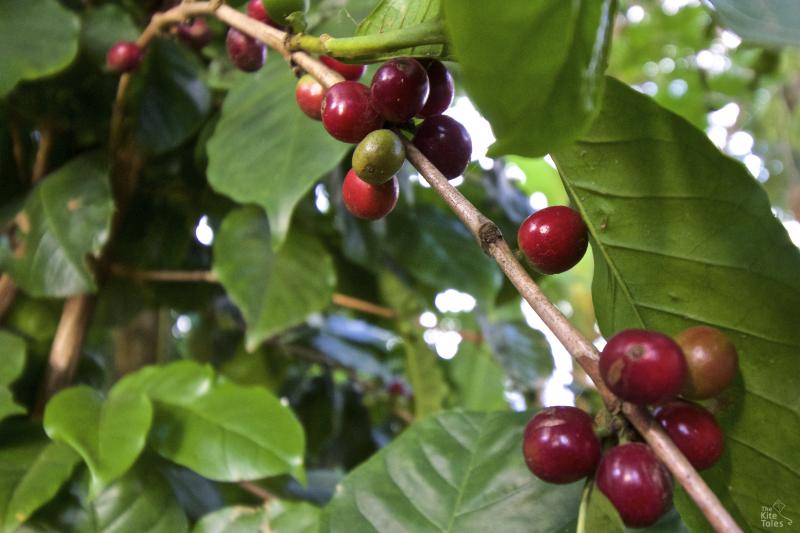
Mountainous Shan State has long been focus of coffee production in Myanmar, with an elevation at over a thousand metres that is perfect for growing Arabica varieties.
But there are plantations in remote hills across the country, including in Tin Maung’s isolated ethnic minority Chin village of Goke Gyi on the border between Magway and Rakhine State.
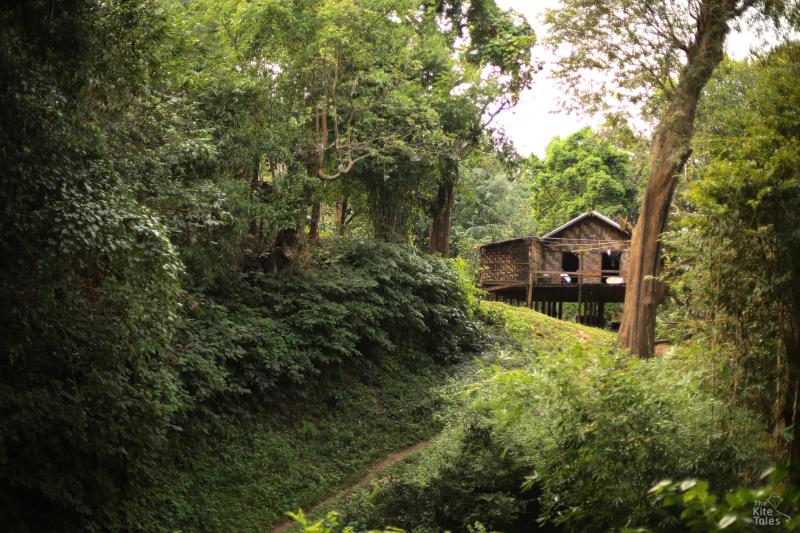
As he walks deeper into the forest Tin Maung tugs at a branch dotted with scarlet berries that shine like fairytale apples, concealing the bitterness beneath the skin.
“The fruit will be too ripe if we don’t pick them soon,” he says.
His three acre coffee plantation includes soaring half-wild trees planted decades ago interspersed with newer bushes that he buys from the government at 300 kyats (around 30 US cents) per seedling. They only start bearing fruit after two or three years.
“The wild trees have been around since I was a boy, but we couldn’t sell their fruit because transportation was really difficult. When I was young, there were no roads here. We had to carry things with a shoulder yoke to take them to sell. It was not easy.”
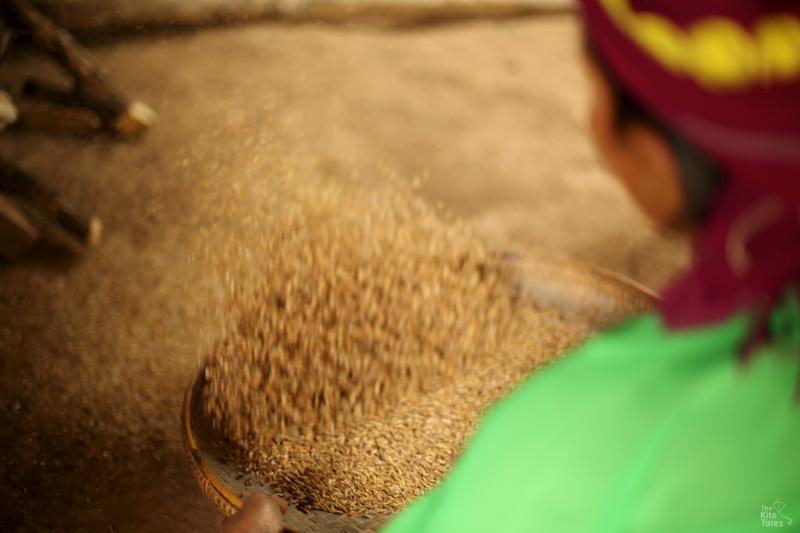

Tin Maung only began planting coffee here after the village was finally connected by road to the rest of the state in the mid 1990s. Myanmar’s junta government encouraged the crop, sending representatives out across the area with seeds and a few growing tips.
Farmers in the area had previously relied on rice as a meagre subsistence crop, foraging for herbs and plants in the dense woodlands around their village and keeping a few chickens and livestock to supplement their diets.
They could only sell the rice they didn’t eat so coffee, which Tin Maung says earns twice as much, was an attractive proposition. But still farmers here struggle to manage a cash crop when they are living on the edge of hunger.
“When we don’t have enough to eat we struggle to concentrate on the coffee. We can’t spend time tending to it. So we just plant a little every year.
“Last year there were quite a lot of berries. But this year the harvest is not as good, I have maybe only about one acre that is bearing fruit.”

While their fellow coffee-growers in Shan State have earned recognition for increasingly high quality produce, Tin Maung and his neighbours remain cut off from advances in cultivation techniques.
They get about 10,000 kyats per viss (about 7,000 kyats per kilogramme) for the sun-dried coffee cherries that they sell to a handful of local traders who visit these remote areas. But they are certain that if they could only learn how to improve their production techniques, they could do as well as their counterparts across the country.
“We don’t have any contacts to sell the finished products ourselves. We don’t know who to speak to and we don’t have the machinery either,” he says.
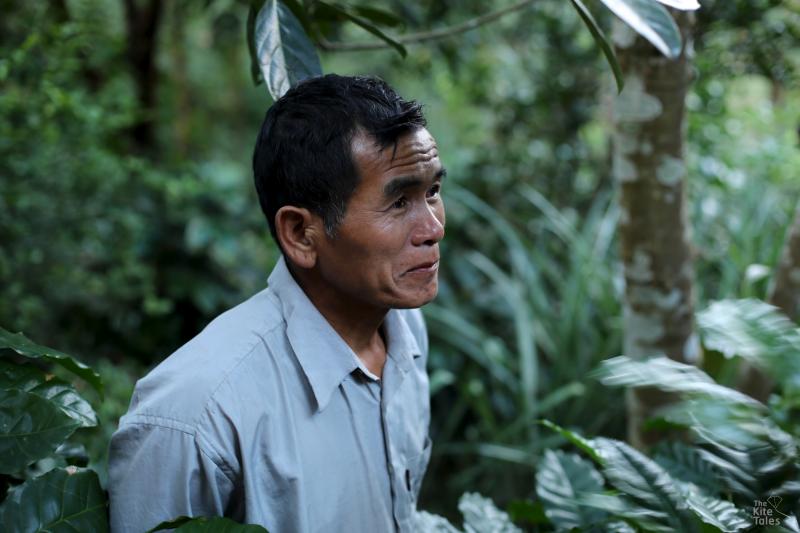
Without the means to process, roast and brew his own beans, Tin Maung has never tasted his own produce.
But he has developed a taste for coffee.
Cracking a smile, he says he is partial to the saccharine pleasures of the instant powders.
“I like it. But I drink the ready-made coffees. Whatever brands, I can’t remember the names.”
Interviewed November 2016




